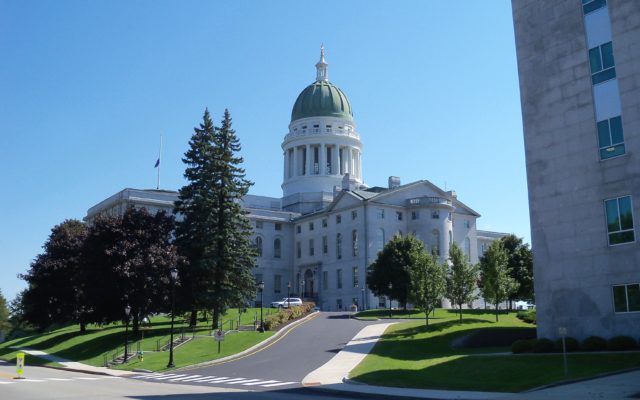
A century ago, Maine lawmakers fought about renovating the governor’s mansion
Note: Bangor Daily News archives dating back to 1911 are now available at newspapers.com. In order to fully access and search them, a separate subscription is required.
By Jessica Piper, Bangor Daily News Staff
For a century after Maine achieved statehood, many governors lived outside of Augusta. That changed 100 years ago with the purchase of the Blaine House — located at 192 State Street, across from the State House — as the official executive mansion.
Initially constructed by a retired ship’s captain in the 1830s, the Blaine House was purchased in 1862 by James G. Blaine. Then the Maine House speaker, he went on to an illustrious career in Maine and national politics, serving as a U.S. senator and secretary of state as well as the Republican nominee for president in 1884. In his bedroom there, his secretary informed him that he had lost narrowly to Democrat Grover Cleveland.
Following his death in 1893, the house was used for a number of purposes, including the temporary home of Gov. John Hill, a rented home for wealthy legislators and the headquarters of the Maine Committee of Public Safety. In 1919, Blaine’s youngest daughter, Harriet Blaine Beale, donated the house to the state for use as the executive residence in memory of her son, Walker, who died fighting in World War I the year prior. The Legislature approved it quickly.
Then-Gov. Carl Milliken, a Republican from Island Falls first elected in 1916, hired famed Portland architect John Calvin Stevens to oversee alterations to the residency, and the state purchased adjacent properties to create what is now a lawn. But the transformation of the former speaker’s home into the official executive mansion was not without controversy.
A front-page headline in the Bangor Daily News in November 1919 accused Milliken of squandering “mounds of money” to renovate the house into an “architectural fright” while more important budgetary items went unfunded. The next day’s paper noted that Milliken had “only” spent $25,000 so far on the “Royal Palace” but suggested the cost would only increase if the Legislature did not rein him in. The governor defended his approach, saying that the renovations required substantial investment.
“The constant purpose has been to have the work substantial and dignified, but to spend no money for an extravagant and gaudy show,” Milliken told legislators. “The cost of the completed building will necessarily be large.”
A later accounting published in the BDN found that the renovations had amounted to just over 1 percent of the state’s $7.1 million budget during the 1919 fiscal year. Other significant expenditures were for schools and roads, plus more than $800,000 related to the war.
With the Legislature not inclined to allocate additional funds, Stevens’ full vision for the residence, which included wide granite steps at the entrance and a retaining wall, was curtailed. Milliken and his family moved into the home in 1920.
The Blaine House renovation was only one of several political problems for Milliken, who had won reelection only narrowly in 1918. (Maine held gubernatorial elections every two years until the 1950s.) With his popularity shriveling within his own party, Milliken ended up losing the Republican gubernatorial nomination in 1920 to former state party chair Frederic Parkhurst.
Parkhurst won the general election easily that September, but he fell ill with pneumonia in the months before he was set to take office. He served only 26 days as governor before dying at the Blaine House on Jan. 31.
Maine Senate President Percival Baxter finished Parkhurst’s term and continued living in the Blaine House, as did the governors after him. Later executives and their families added additional touches to the building and its grounds. There were few significant changes until the 1950s, when a leaking roof was replaced under Gov. Edmund Muskie, later a senator, Democratic vice presidential nominee and secretary of state.
The renovations, as Stevens had originally planned them, remained unfinished for nearly 70 years until Gov. John McKernan recruited private donors to fund a restoration in the late 1980s that included the construction of granite steps as well as significant landscaping work and the restoration of the reception area.
The Blaine House has remained occupied for most of the past century, though a few governors — most recently independent Angus King, now a U.S. senator — have opted to commute.